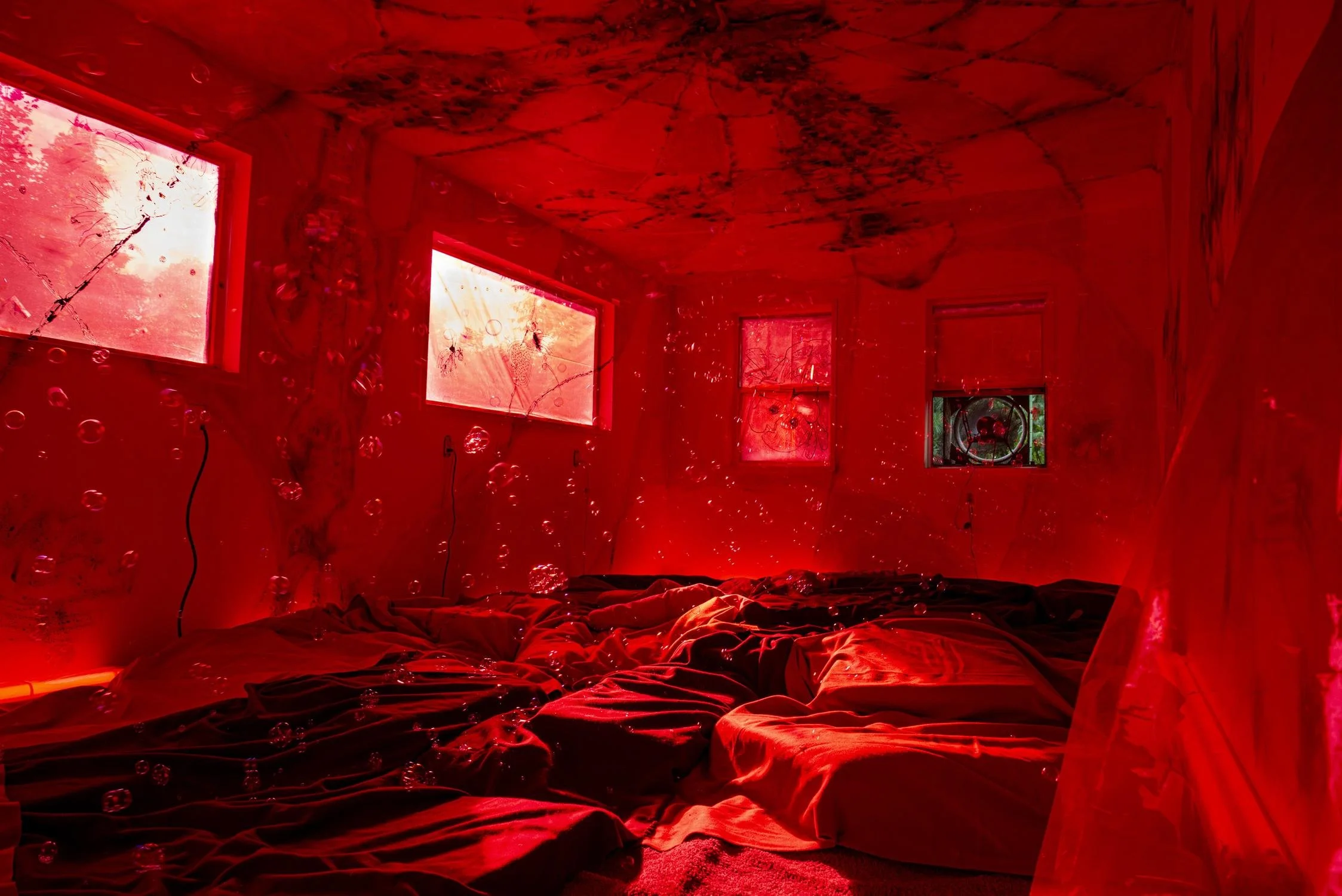Exhibition writing for The Green Lodge (Chatham, NY)
July 17–August 31, 2025
I knew your father when he had cojones is a continuation of the worldbuilding that propels Daniel Giordano’s practice, one typified by alchemy and ambivalence. The artist’s intuitive and inventive use of organic, synthetic, and immaterial mediums yields works that are simultaneously vigorous, grotesque, stimulating, and rowdy.
Giordano draws from his immediate surroundings in his hometown of Newburgh, New York. His family’s former coat manufacturing company headquartered there now serves as the artist’s studio. He incorporates trappings of the factory as well as bits and parts scavenged from the streets or the banks of the Hudson into his art.
Yet perhaps the most prevailing theme—and subject—that informs Giordano’s work is family. The artist tells stories of his family like mythologies, he immortalizes relatives throughout generations past and present, he captures what’s tough and tender when it comes to family dynamics. While deeply personal, Giordano suspends the delicate yet ancient bond called kinship, and all its baggage, in material substrates expressed in polymers, cosmetics, food, found objects, paint, and ink.
Primarily known for his sculptural output, Giordano has always maintained a two-dimensional practice, namely through drawing and collage. Considering the inherently intimate scale of a hand-drawn gesture, the drawings feel more proximate than the sculptures, indexical traces of his hands rather than shellacked, deep-fried, felted transformations seemingly valences away from the artist himself.
In a new site-specific installation at The Green Lodge, haptics and iconography shift in an out of focus in a buzzy clamor. Against the gallery’s green exterior, red lights and red gels over the windows induce a visual hum, with senses heightened by bubbles streaming through the space and the whirring of the industrial fan. The floor is a soft patchwork of cushions upholstered in fabrics from his studio’s former factory days. Images of balls, skulls, middle fingers, and flies are laced into a kaleidoscopic doomsday clock with spider legs for hands, all burned into the gallery ceiling and walls.
While phallic and testicular forms recur throughout Giordano’s sculptures and drawings, the work feigns a sophomoric humor and rather triangulates around something more serious—somewhere between pride and possessiveness, the unconscious and castration anxiety, the pretense and lore of masculinity. “I knew your father when he had cajones [sic],” was the backhanded quip—potent with bravado and betrayal—directed at the repo man protagonist in Richard G. Brown’s 1964 short story Mr. Iscariot.
The exhibition presents a world brimming with gnarly swagger, yet softened by a sense of sincerity, even vulnerability. Reservoirs of memory are dredged and recast. As if by alchemy, the banal becomes talismanic, and the personal becomes the stuff of legend.
